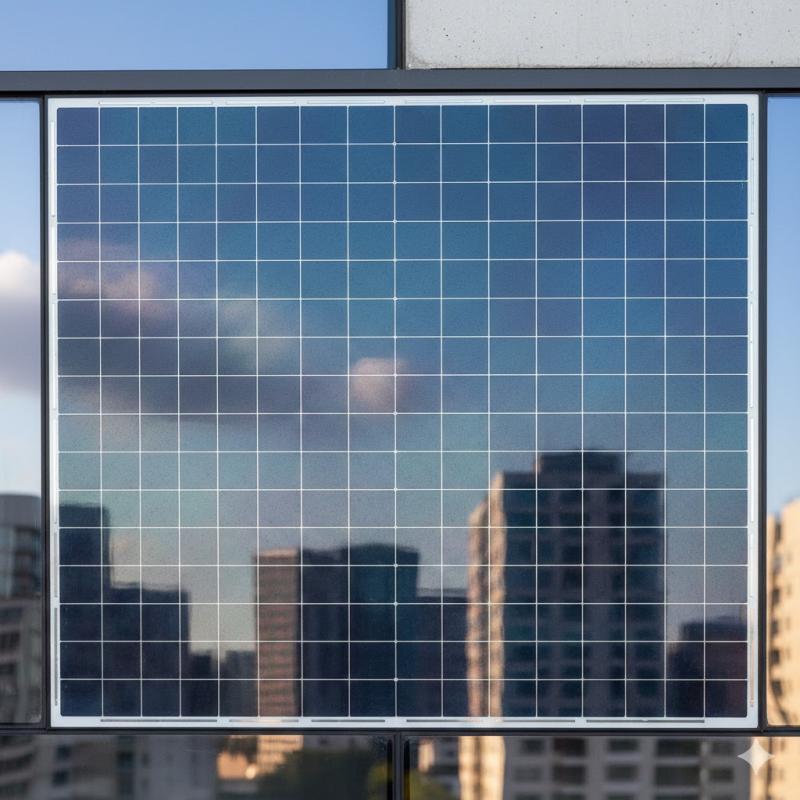China’s energy shift fuels partnership opportunities: British business leader-Xinhua – 新华网
Report on China’s Clean Energy Transition and its Contribution to Sustainable Development Goals
Executive Summary
China has established itself as the global leader in clean energy development, significantly contributing to the achievement of multiple Sustainable Development Goals (SDGs), particularly SDG 7 (Affordable and Clean Energy) and SDG 13 (Climate Action). The nation’s strategic focus on renewable energy is driving industrial renewal, fostering international partnerships (SDG 17), and promoting innovation in sustainable infrastructure (SDG 9). This report analyzes China’s progress, its global impact, and collaborative efforts, based on recent data and expert analysis.
Progress Towards SDG 7: Affordable and Clean Energy
According to a report by the global energy think tank Ember, China’s advancements in renewable energy generation in the first half of 2025 have been substantial. The nation is a clear frontrunner in the global clean energy expansion.
- All of China’s power demand growth in the first half of 2025 was met through clean electricity generation.
- This growth was accompanied by a reduction in fossil fuel generation, directly supporting climate action targets.
Key Generation Statistics (H1 2025):
- Solar Power: China accounted for 55% of the global increase in solar generation, with its domestic output growing 43% year-on-year, significantly above the global average of 31%.
- Wind Power: The country was responsible for 82% of the global rise in wind generation. Its wind power output expanded by 16%, more than double the global average.
Contributions to SDG 9, SDG 13, and SDG 15
China’s clean energy transition is a core component of a long-term national strategy that integrates industrial policy, innovation, and environmental stewardship, thereby advancing several interconnected SDGs.
- SDG 9 (Industry, Innovation, and Infrastructure): The transition is an engine for industrial renewal. Electrification is advancing across transport, housing, and manufacturing, driving continuous innovation in grid integration and energy storage. Projects like the Changji-Guquan ±1100 kV UHV transmission line exemplify the development of resilient infrastructure.
- SDG 13 (Climate Action): By meeting new energy demands with renewables and cutting fossil fuel use, China is taking decisive action to combat climate change and its impacts.
- SDG 15 (Life on Land): Innovative models are being deployed, such as the “PV-based desert control” in the Kubuqi Desert, which generates green electricity while simultaneously restoring the ecosystem and combating desertification.
Fostering SDG 17: Partnerships for the Goals
The global impact of China’s clean energy success is amplified through international cooperation. The partnership between China and the United Kingdom serves as a model for achieving shared decarbonization goals.
Key China-UK Initiatives:
- Virtual Power Plants: The 48 Group facilitated cooperation between British supplier Octopus Energy and Chinese partners to explore virtual power plants and electric vehicle (EV) grid integration.
- Vehicle-to-Grid (V2G) Technology: Octopus Energy partnered with Chinese automaker BYD to launch a V2G bundle in Britain, optimizing energy use through smart charge-discharge technology.
- Wind Energy Collaboration: Octopus Energy has also formed a strategic partnership with a leading Chinese wind turbine manufacturer to explore new opportunities.
- Replicable Models: A joint project is underway to build a virtual power plant framework in Beijing, connecting distributed energy resources with the goal of creating an internationally replicable model for intelligent energy management.
Conclusion: A Shared Global Responsibility
China’s clean energy transition is fundamentally reshaping the global energy economy, providing benefits that extend beyond its borders through lower costs, faster deployment of technologies, and shared learning. The emphasis on cooperation, as seen in the China-UK relationship, underscores the understanding that the energy transition is a shared responsibility. Continued collaboration is essential for addressing the defining challenges of climate change and achieving sustainable growth in line with the 2030 Agenda for Sustainable Development.
Analysis of Sustainable Development Goals in the Article
1. Which SDGs are addressed or connected to the issues highlighted in the article?
-
SDG 7: Affordable and Clean Energy
- The entire article is centered on China’s significant progress and global leadership in clean energy, specifically solar and wind power generation. It discusses the development, consumption, and export of clean energy technologies.
-
SDG 9: Industry, Innovation, and Infrastructure
- The article highlights the construction of large-scale infrastructure like the “Changji-Guquan ±1100 kV ultra-high voltage direct current power transmission project.” It also covers innovations such as virtual power plants, electric vehicle grid integration, and advanced manufacturing of wind turbines and hydrogen-powered trains.
-
SDG 13: Climate Action
- By focusing on the transition from fossil fuels to renewable energy, the article directly addresses climate action. It notes that China “met all of its power demand growth in the first half of 2025 through clean electricity generation, while cutting fossil fuel generation and emissions,” which is a key strategy for decarbonization.
-
SDG 17: Partnerships for the Goals
- A significant portion of the article is dedicated to the cooperation between China and Britain. It details joint initiatives, partnerships between companies like Octopus Energy and BYD, and the shared goal of decarbonization, emphasizing that the energy transition is a “shared responsibility.”
-
SDG 15: Life on Land
- The article provides a specific example of a project in the Kubuqi Desert that combines clean energy generation with environmental restoration. The “PV-based desert control” model is described as generating green electricity while simultaneously helping to “combat desertification.”
-
SDG 11: Sustainable Cities and Communities
- The discussion on electrification in transport, including the partnership between Octopus and BYD for a “vehicle-to-grid bundle” and “free charging” through smart technology, relates to developing sustainable transport systems within communities.
2. What specific targets under those SDGs can be identified based on the article’s content?
-
Under SDG 7 (Affordable and Clean Energy):
- Target 7.2: By 2030, increase substantially the share of renewable energy in the global energy mix. The article’s core message is about China’s massive increase in solar and wind generation, contributing significantly to the global share of renewables.
- Target 7.a: By 2030, enhance international cooperation to facilitate access to clean energy research and technology… and promote investment in energy infrastructure and clean energy technology. The detailed description of China-Britain cooperation on virtual power plants, EV grid integration, and wind energy directly aligns with this target.
-
Under SDG 9 (Industry, Innovation, and Infrastructure):
- Target 9.4: By 2030, upgrade infrastructure and retrofit industries to make them sustainable, with increased resource-use efficiency and greater adoption of clean and environmentally sound technologies. The article describes China’s clean energy transition as an “engine of industrial renewal” and highlights the adoption of clean technologies across manufacturing and logistics.
-
Under SDG 13 (Climate Action):
- Target 13.2: Integrate climate change measures into national policies, strategies and planning. The article mentions China’s “strategic, coherent and long-term national vision” for renewable energy, indicating that climate action is integrated into its national growth strategy.
-
Under SDG 15 (Life on Land):
- Target 15.3: By 2030, combat desertification, restore degraded land and soil… and strive to achieve a land degradation-neutral world. The example of the photovoltaic base in the Kubuqi Desert, which “helps combat desertification” while generating power, is a direct application of this target.
-
Under SDG 17 (Partnerships for the Goals):
- Target 17.7: Promote the development, transfer, dissemination and diffusion of environmentally sound technologies. The article notes that “China’s exports of clean technologies reached a record 20 billion U.S. dollars” and that “shared learning” from China’s success is transforming global markets.
3. Are there any indicators mentioned or implied in the article that can be used to measure progress towards the identified targets?
-
For Target 7.2 (Increase share of renewable energy):
- Quantitative Indicators: The article provides specific data points that serve as direct indicators of progress.
- China accounted for 55% of the global increase in solar generation.
- China accounted for 82% of the rise in wind generation.
- China’s solar power output grew 43% year-on-year in the first half of 2025.
- China’s wind generation expanded by 16% in the same period.
- Quantitative Indicators: The article provides specific data points that serve as direct indicators of progress.
-
For Target 17.7 (Promote environmentally sound technologies):
- Quantitative Indicator: The article states that “China’s exports of clean technologies reached a record 20 billion U.S. dollars in August,” which is a measurable indicator of technology transfer and diffusion.
-
For Target 13.2 (Integrate climate change measures):
- Qualitative Indicator: The article implies progress by stating that China “met all of its power demand growth in the first half of 2025 through clean electricity generation, while cutting fossil fuel generation and emissions.” This demonstrates the successful integration of climate policies into energy planning.
-
For Target 15.3 (Combat desertification):
- Qualitative Indicator: The article describes the “PV-based desert control” model in the Kubuqi Desert, which is an initiative that “helps combat desertification.” While not providing a quantitative measure of land restored, it serves as a clear indicator of action towards the target.
-
For Target 7.a (Enhance international cooperation):
- Qualitative Indicators: The article lists several specific partnerships and joint initiatives as evidence of cooperation:
- The 48 Group introducing Octopus Energy to Chinese partners.
- Octopus partnering with BYD on a vehicle-to-grid bundle.
- Octopus forming a strategic partnership with a Chinese wind turbine manufacturer.
- The joint development of a virtual power plant framework in Beijing.
- Qualitative Indicators: The article lists several specific partnerships and joint initiatives as evidence of cooperation:
4. Summary Table of SDGs, Targets, and Indicators
| SDGs | Targets | Indicators Identified in the Article |
|---|---|---|
| SDG 7: Affordable and Clean Energy | 7.2: Increase substantially the share of renewable energy in the global energy mix. | China accounted for 55% of the global increase in solar generation and 82% of the rise in wind generation; Solar power output grew 43% and wind generation by 16% year-on-year. |
| SDG 7: Affordable and Clean Energy | 7.a: Enhance international cooperation to facilitate access to clean energy research and technology. | Joint China-Britain initiatives, including partnerships between Octopus Energy, BYD, and a Chinese wind turbine manufacturer to develop virtual power plants and EV grid integration. |
| SDG 9: Industry, Innovation, and Infrastructure | 9.4: Upgrade infrastructure and retrofit industries to make them sustainable… with greater adoption of clean and environmentally sound technologies. | China’s clean energy transition is described as an “engine of industrial renewal”; Construction of large-scale projects like the ±1100 kV UHVDC power transmission line. |
| SDG 13: Climate Action | 13.2: Integrate climate change measures into national policies, strategies and planning. | China’s “strategic, coherent and long-term national vision” for renewable energy; Meeting all power demand growth with clean electricity while cutting fossil fuel generation. |
| SDG 15: Life on Land | 15.3: Combat desertification, restore degraded land and soil. | Implementation of a “PV-based desert control” model in the Kubuqi Desert that generates electricity while helping to combat desertification. |
| SDG 17: Partnerships for the Goals | 17.7: Promote the development, transfer, dissemination and diffusion of environmentally sound technologies. | China’s exports of clean technologies reached a record $20 billion in August; Mention of “shared learning” transforming global markets. |
Source: xinhuanet.com
What is Your Reaction?
 Like
0
Like
0
 Dislike
0
Dislike
0
 Love
0
Love
0
 Funny
0
Funny
0
 Angry
0
Angry
0
 Sad
0
Sad
0
 Wow
0
Wow
0
















































:focal(1500,1000)/https://media.globalcitizen.org/a6/9a/a69a4720-d8a1-4715-b596-18738d03c05c/rotary_polio_hero_image.jpg?#)







/countries/sri-lanka/photo-credit---dmc-sri-lanka.tmb-1200v.jpg?sfvrsn=dc298bcc_1#)
















